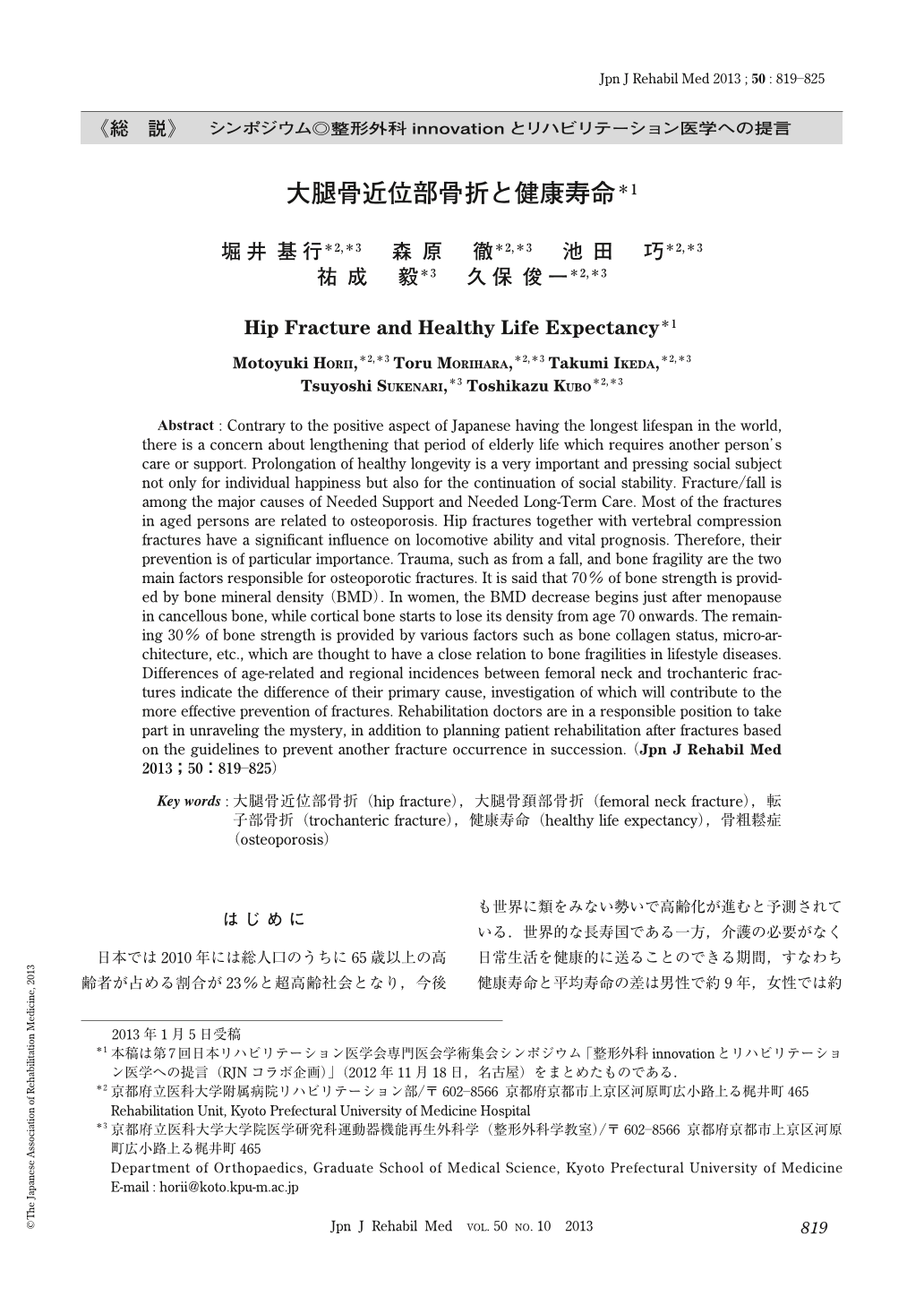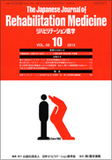Japanese
English
- 販売していません
- Abstract 文献概要
- 1ページ目 Look Inside
- 参考文献 Reference
はじめに
日本では2010年には総人口のうちに65歳以上の高齢者が占める割合が23%と超高齢社会となり,今後も世界に類をみない勢いで高齢化が進むと予測されている.世界的な長寿国である一方,介護の必要がなく日常生活を健康的に送ることのできる期間,すなわち健康寿命と平均寿命の差は男性で約9年,女性では約13年とされ,この介護を要する期間が最近拡大している.超高齢社会にあって健康寿命の延伸は,個人や家族の幸福のみでなく社会全体が健全に機能するためにもきわめて重要である.2010年国民生活基礎調査によると「骨折・転倒」は要支援の12.7%,要介護の9.3%と重要な原因の1つとなっている(図1).従って,転倒および骨折を防ぐ対策は健康寿命を延伸するうえで急務である.高齢者の骨折は多くが骨粗鬆症による骨脆弱性に関係する骨折で,とくに大腿骨近位部骨折は椎体圧迫骨折とともに予後への影響が大きい.寝たきりの原因になるのはもちろん,死亡率も上昇すると報告されている.たとえば大腿骨近位部骨折では6.68倍,症状のある椎体圧迫骨折では8.64倍などと推定されており,外傷や手術直後の死亡率だけでなく,受傷後,数年たっても死亡率の差が対照群に比べて開くとされる1).
Abstract : Contrary to the positive aspect of Japanese having the longest lifespan in the world, there is a concern about lengthening that period of elderly life which requires another person's care or support. Prolongation of healthy longevity is a very important and pressing social subject not only for individual happiness but also for the continuation of social stability. Fracture/fall is among the major causes of Needed Support and Needed Long-Term Care. Most of the fractures in aged persons are related to osteoporosis. Hip fractures together with vertebral compression fractures have a significant influence on locomotive ability and vital prognosis. Therefore, their prevention is of particular importance. Trauma, such as from a fall, and bone fragility are the two main factors responsible for osteoporotic fractures. It is said that 70% of bone strength is provided by bone mineral density (BMD). In women, the BMD decrease begins just after menopause in cancellous bone, while cortical bone starts to lose its density from age 70 onwards. The remaining 30% of bone strength is provided by various factors such as bone collagen status, micro-architecture, etc., which are thought to have a close relation to bone fragilities in lifestyle diseases. Differences of age-related and regional incidences between femoral neck and trochanteric fractures indicate the difference of their primary cause, investigation of which will contribute to the more effective prevention of fractures. Rehabilitation doctors are in a responsible position to take part in unraveling the mystery, in addition to planning patient rehabilitation after fractures based on the guidelines to prevent another fracture occurrence in succession.

Copyright © 2013, The Japanese Association of Rehabilitation Medicine. All rights reserved.


